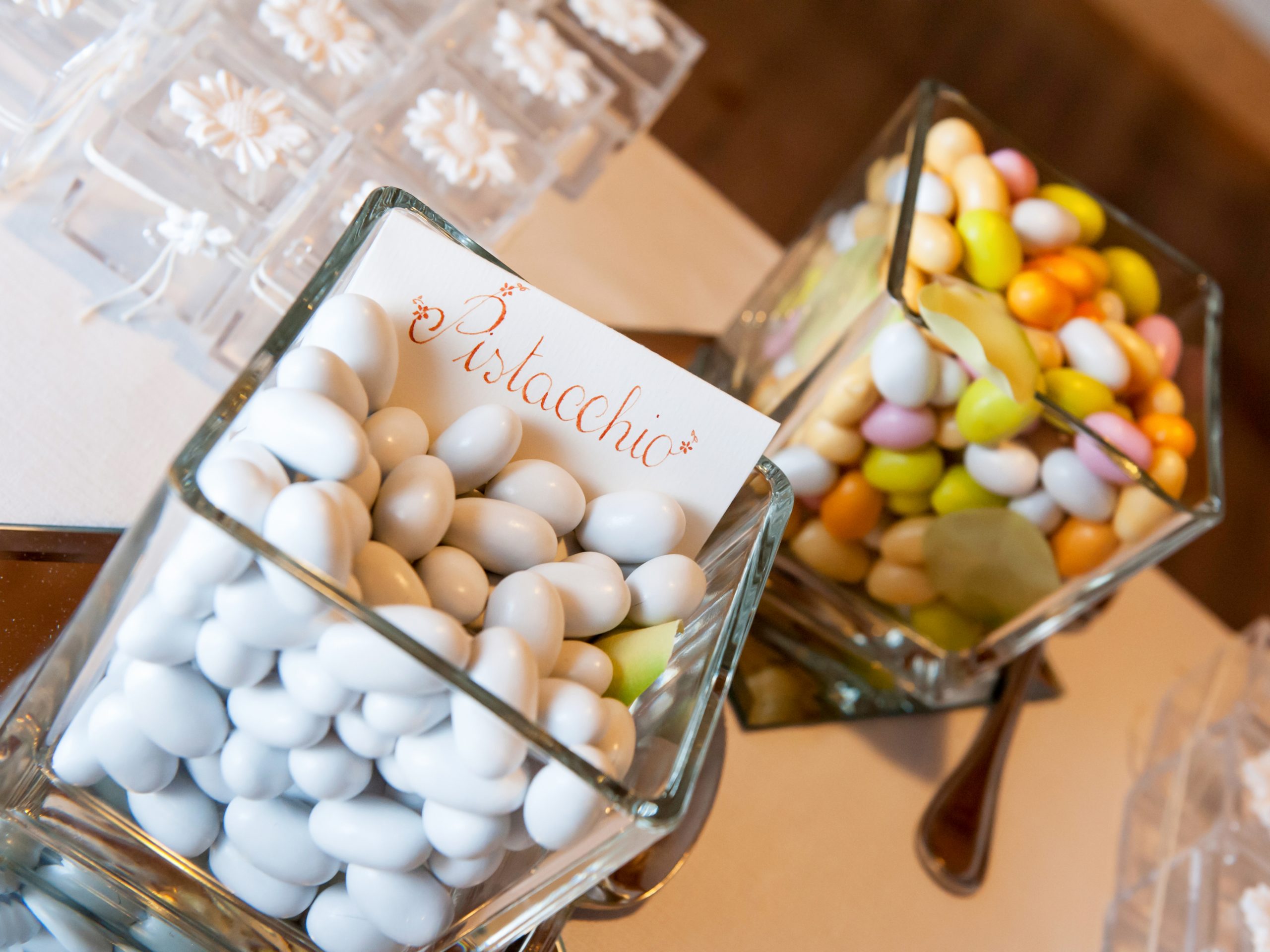Blue for a little boy or pink if it is a girl; white for weddings or red for graduation: while the colour changes according to the event in which they are offered to guests, the Italian confetti are today well known worldwide as a symbol of good luck during important celebrations. What was once only a sweet made of almond with a hard sugar coating, it is now a delicious treat, usually wrapped in a tulle bag, which can be arranged in a way to look like a real decoration with flowers and more.
The first writings to mention the existence of confetti belonged to the Fabi family, who lived in 447 BC. But the true tradition of producing them dates back to the Romans, who used them to celebrate marriages and births. However, at that time, since sugar was not known and used as ingredient, confetti were mainly made with honey. Later on, some traces of the use of confetti were also found in the Arabic world, thanks to Al Razi, who had the idea to cover his bitter medicines with a sweet shell, in order to give them a more pleasant taste. Nevertheless, to picture confetti as we know today we need to go back to the 15th century when, for the first time, sugar was brought to Europe from West India: sugar easily replaces honey and, combined with the popular almonds of Avola, turned into the small candy without the addition of starch or flour.
It was around 1492 that the manufacture of modern confetti officially started in Sulmona, which has become, over years, the capital of the little candies’ tradition: it was thanks to the Suore Clarisse of the Monastery of Santa Chiara that making confetti in a creative way became an art. They used to tie them together with silk threads, in order to compose bunches, ears, and bouquets and pay homage to noble women joining weddings. Indeed, since the cost of sugar was at that time still very high, confetti were initially considered a luxury product, loved by princesses and bishops.
Nowadays confetti are on the market in different colors, shapes, and taste, in particular the confetti from Sulmona are part of an old tradition, kept alive from many local firms. The typical confetto is formed of an inner core, usually consisting of a whole almond, the so-called Pizzuta of Avola, shelled and peeled, covered with layers of sugar. The candy keeps the shape of the almond seed, strongly flattened, with no streaks. The outer surface is smooth and white, similar to shades of porcelain. The size and the weight of the candy can change according to the almonds, however the ‘soul’ of the candy can be made up with other ingredients, such as hazelnut, cinnamon, chocolate, pistachio, dried fruit covered with layers of sugar or chocolate.
To obtain the tasty sugar cover, called zuccheratura, manufacturers have to use a very special machine called bassina: similar to a boiler, made of steel, in continuous rotation, the machine is full of almonds, slowly filled with sugar. By the time the tradition consolidated, the packaging became more relevant and confetti were mixed and matched with flowers in order to make bouquets with fine fabrics like tulle and satin, still sold in the local shops. Although they are a distinctive part of weddings, confetti, offered in different colours, are associated with the most important events of people’s life: they symbolize the union of the couple through the two parts of the almond, held together by a layer of sugar. Even though currently the sweets are distributed as packed in small bags, the real tradition wants the bride, together with the groom, to distribute them at the end of the reception with a silver spoon, arranged on an elegant silver tray or in a basket. If your choice would be to distribute them in bags, do not forget to pay attention to the quantity: indeed, the most important thing is to pick an odd number. Five confetti represent a wish for fertility, long life, health, wealth and happiness; three confetti symbolize the couple and their son; one confetto refers instead to the uniqueness of the event.
The confetti are so much part of the Italian tradition that one of the oldest firms has opened the so-called Museo dell’Arte e della Tecnologia del Confetto in Sulmona. Indeed, a large part of the Pelino’s factory has put on display its old-fashioned confectionery machines and equipment, as well as some rare objects related to the ancient Sulmonese art of confectionary. The museum, founded by the Pelino family in 1988, wants to celebrate not only the history of the company itself, but wants also to show how local ancient confectioners have been contributing to the fame of Sulmona. As big changes in the production process were introduced in the 1800’s, thanks to steam energy and later on through the introduction of electric power and, today it is mainly through prints and photos that visitors understand what the confectionary industry has meant to Sulmona and how the old tradition has been kept alive throughout centuries.





























